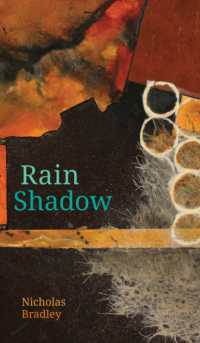Full Description
Visions in Silk presents the first comprehensive exploration of exquisite Japanese fine art textiles from the Meiji era (1868-1912), showcasing the unparalleled treasures from the Khalili Collection of Japanese Art.
This beautifully illustrated volume reveals how Japanese artists and craftsmen ingeniously adapted centuries-old textile traditions to create innovative art textiles that captivated international audiences, won exhibition awards, and served as prestigious diplomatic gifts.
Featuring over 300 spectacular examples, the book examines dazzling works of embroidery, yuzen resist-dyed silk and cut velvet, tapestry, and oshi-e raised silk, ranging from elegant panels, hangings and screens to grand exhibition showpieces. Each represents the pinnacle of artistic collaboration and hitherto unsurpassed technical mastery.
Written by leading international experts, this landmark publication provides unprecedented insight into these remarkable yet understudied treasures. Visions in Silk will enchant anyone interested in Japanese art, textile design, Japonisme, and the cultural transformations that occurred during the Meiji era, when Japan opened to the outside world.
Contents
Foreword by Professor Nasser D. Khalili, PhD, KCSS, KCFO
Founder of the Khalili Collections
1. Meiji 'Artistic Textiles'
Explores the historical context for the development of Meiji fine art textiles, from the foundations of the sophisticated luxury textile industry of Kyoto to the extraordinary artistic dialogue between Japan and nations around the world.
2. Makers
Introduces the key makers of Meiji artistic textiles, including the pioneering Tanaka Rishichi and top producers Nishimura Sozaemon (Chiso), Iida Shinshi (Takashimaya) and Kawashima Jinbei. Includes new information on lesser-known makers such as S. Nomura (Benten), Mitsui Gofukuten, Daimaruichi and Aoki Embroidery, as well as the students of newly established girls' schools.
3. Sources of Inspiration
Looks at the subjects of Meiji textiles and the artistic sources that inspired them, from Japanese traditional painting styles to European prints, oil paintings and photographs. Essays by Japanese specialists Hirota Takashi and Matsubara Fumi focus on Takashimaya textiles and the development of embroidery designs.
4. Types and Techniques
Detailed study of the main types of Meiji artistic textiles, their background and the techniques involved.
- Embroidery (with glossary of techniques)
- Yuzen resist-dyeing and yuzen-dyed cut velvet
- Silk tapestry weaving
- Oshi-e raised silk pictures
Appendices
1. Makers and Marks
Illustrated list of producing companies, embroiderers and designers
2. Additional Works
Textiles not included in the main catalogue
Bibliography








